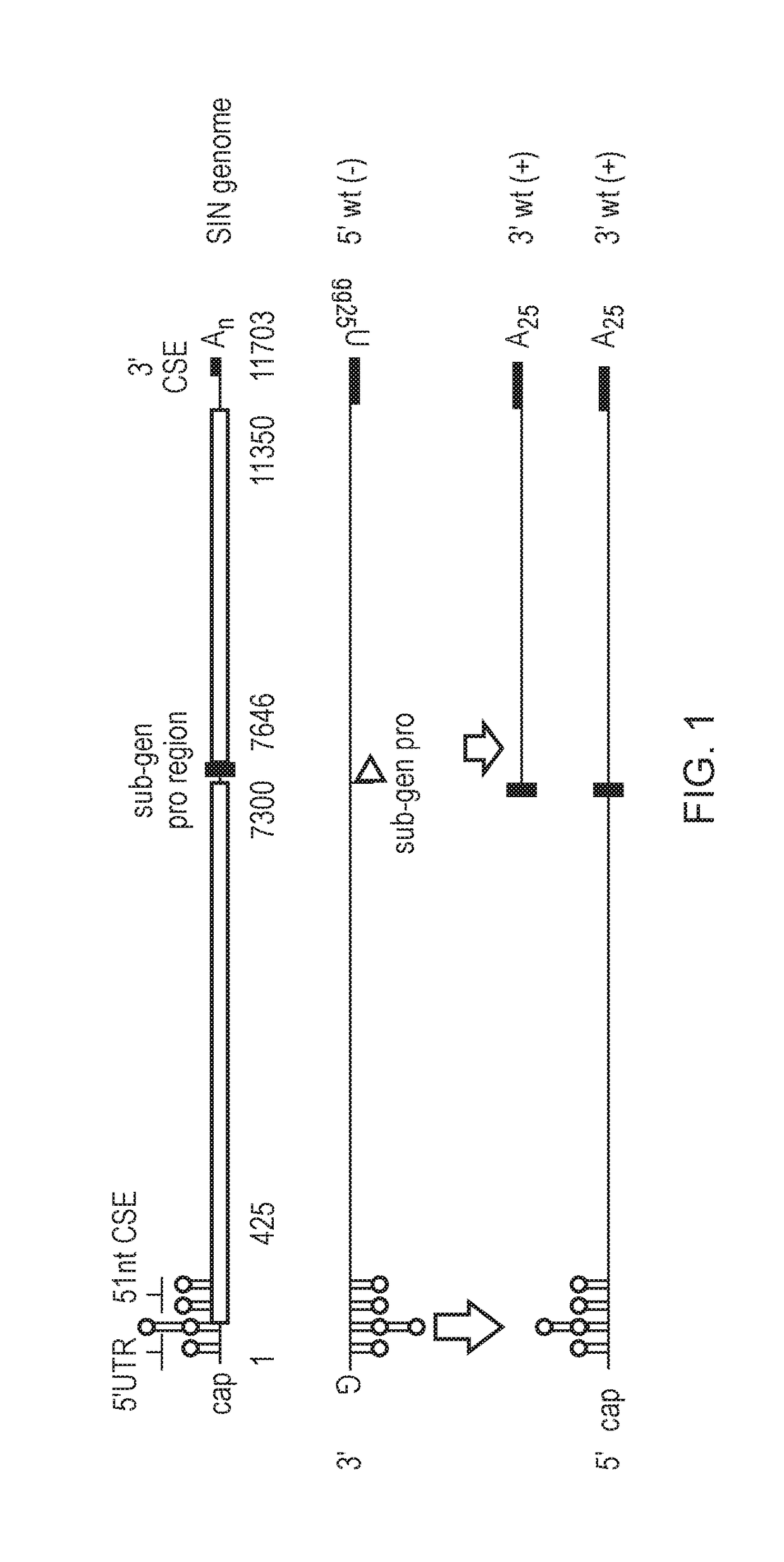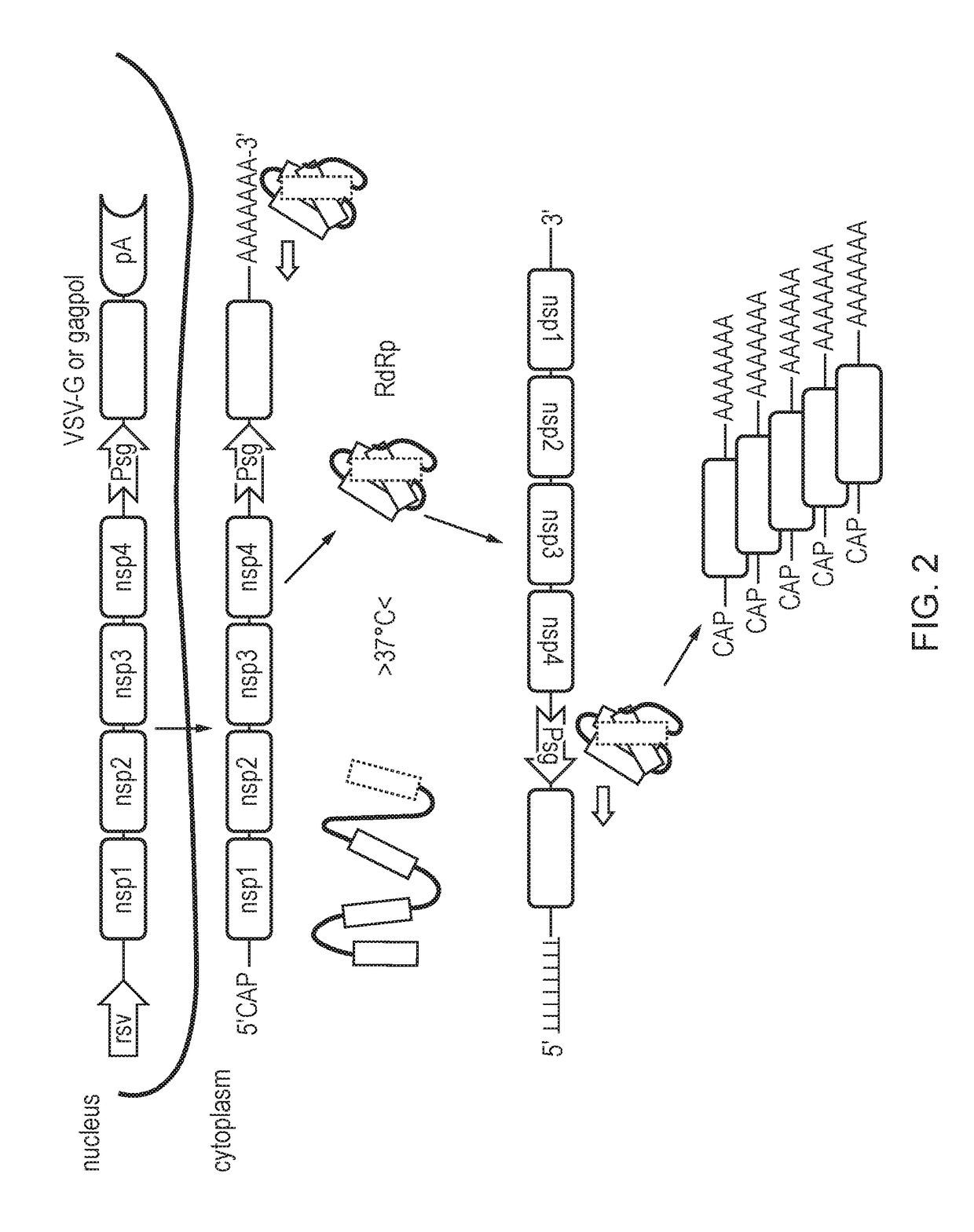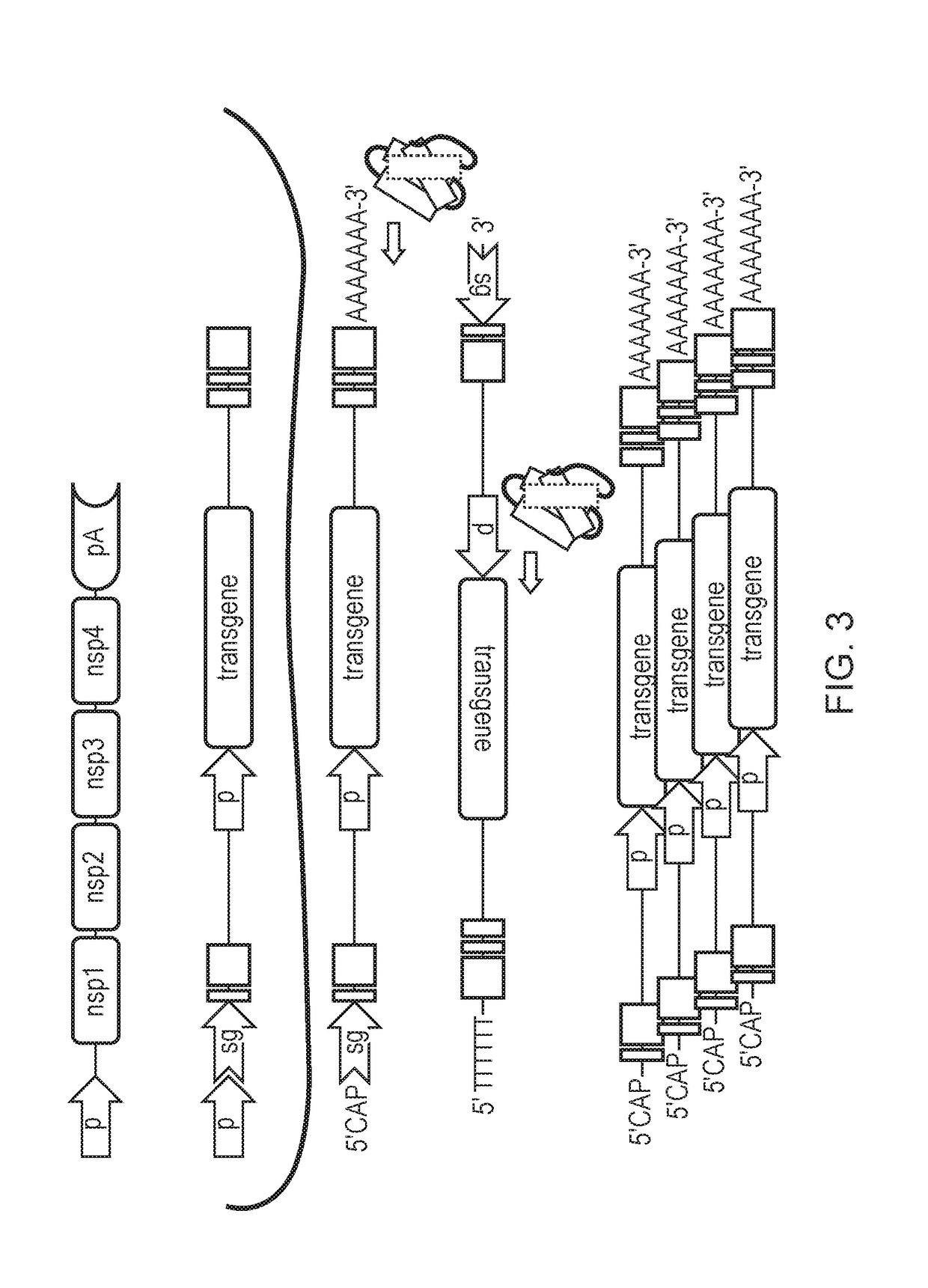Retrovirus Packaging Cell
- Summary
- Abstract
- Description
- Claims
- Application Information
AI Technical Summary
Benefits of technology
Problems solved by technology
Method used
Image
Examples
example 1
re Regulation of eGFP Expression
[0345]The temperature-dependent regulation of expression of the RdRp from 987*SinRep (SEQ ID NO: 2) was tested in HEK293T cells. The eGFP open reading frame (SEQ ID NO: 3) was cloned downstream of the subgenomic promoter. Subsequently, both the control plasmid 987SinRep-eGFP and the mutated plasmid 987*SinRep-eGFP were transfected into HEK293T cells using GeneJuice (as per manufacturer's protocol). Cells were either incubated at 37° C. and 29° C. and then eGFP expression was assessed 48 hrs post-transfection by Flow Cytometry (FIG. 3).
[0346]The percentage of eGFP-positive cells in cells transfected with 987*SinRep plasmid was two log higher at 29° C. than at 37° C., whereas that of the 987SinRep control plasmid was a quarter of a log lower at 29° C. than 37° C. (FIG. 3(a)). Moreover the MFI of eGFP positive cells transfected with 987*SinRep was significantly higher at 29° C. than at 37° C., while the opposite was seen for the control plasmid 987SinRep...
example 2
Effects of VSV-G
[0348]To evaluate the feasibility of regulating cytotoxic lentiviral protein using the thermolabile RdRp, VSV-G (SEQ ID NO: 4) was cloned downstream of the subgenomic promoter of 987*SinRep plasmid. Next, HEK293T cells were transiently transfected with both VSV-G (wild-type) and 987*SinRep-VSV-G using GeneJuice and incubated for 37° C. and 29° C. for 48 hours.
[0349]Syncytium formation was clearly visible for cells transfected with VSV-G at 37° C. while the cell density was lower than the control (NT, non-transfected) at 29° C. (FIG. 4(a)). This was further apparent when the absolute live cell numbers was determined and both temperature conditions had similar very low live cell count (FIG. 4(b)). Conversely, no syncytium formation was seen in cells transfected with 987*SinRep-VSV-G at both 37° C. and 29° C. (FIG. 4(a)). However, cells incubated at 29° C. had a significantly lower absolute cell count than cells incubated at 37° C. (FIG. 4(b)).
[0350]These results clearl...
example 3
re Induction of Lentiviral Vector Production
[0351]To determine whether the lentiviral helper genes (VSV-G and Gagpol), expressed under the transcriptional regulation of RdRp, can be induced for viral vector production, human codon optimized Gagpol (SEQ ID NO: 5) was cloned downstream the subgenomic promoter of 987*SinRep. HEK293T cells were transiently transfected with 2nd generation packaging system; 987*SinRep-VSV-G, Gagpol and a transfer vector encoding eGFP, and with a 3rd generation packaging system; VSV-G, 987*SinRep-Gagpol, REV and a transfer vector encoding eGFP. All conditions were incubated at both 37° C. and 29° C. for 48 hours upon transfection. Subsequently, supernatants were collected and processed to remove cellular debris. Serial dilutions were prepared for each condition (6 points, 1:2) and each fraction was added onto NT-293T cells to assess transduction and viral titres.
[0352]Supernatant produced with 987*SinRep-VSV-G at 29° C. infected HEK293T cells with a transd...
PUM
| Property | Measurement | Unit |
|---|---|---|
| Temperature | aaaaa | aaaaa |
| Temperature | aaaaa | aaaaa |
| Temperature | aaaaa | aaaaa |
Abstract
Description
Claims
Application Information
 Login to View More
Login to View More - R&D
- Intellectual Property
- Life Sciences
- Materials
- Tech Scout
- Unparalleled Data Quality
- Higher Quality Content
- 60% Fewer Hallucinations
Browse by: Latest US Patents, China's latest patents, Technical Efficacy Thesaurus, Application Domain, Technology Topic, Popular Technical Reports.
© 2025 PatSnap. All rights reserved.Legal|Privacy policy|Modern Slavery Act Transparency Statement|Sitemap|About US| Contact US: help@patsnap.com



